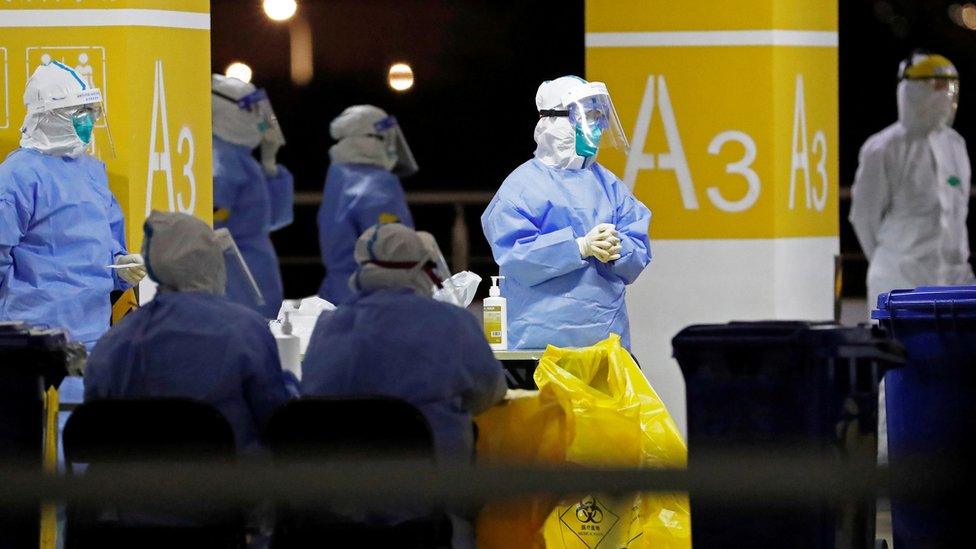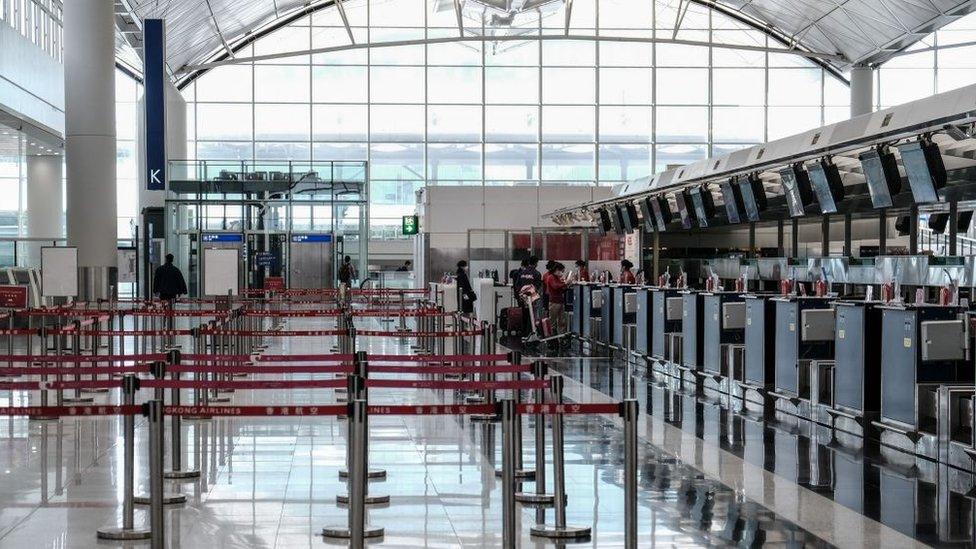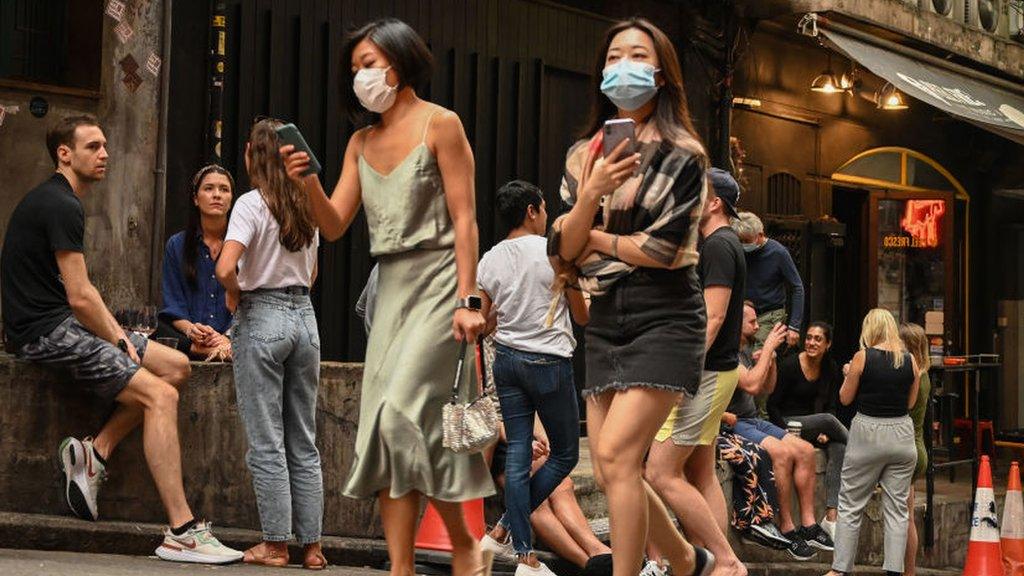Shanghai airport Covid scare sparks 'chaotic' mass testing
- Published

Workers in protective suits at the Shanghai Pudong International Airport on Sunday
A string of positive Covid tests at Shanghai's Pudong airport has sparked mass testing of thousands of people amid reportedly chaotic scenes.
Authorities requested all cargo staff come for testing on Sunday.
Official pictures released of the testing appear to show an orderly, calm process.
However, other videos believed to be of the mass testing show officials in hazmat suits corralling large, yelling crowds into a restricted space.
Many of the videos have since disappeared, and state media have not reported on any chaos, saying only that more than 16,000 people were tested overnight.
According to China's Global Times newspaper, mass testing began on Sunday afternoon after several cargo workers and close contacts tested positive.
Shanghai has reported at least seven local cases since 9 November, mainly involving this group, following five months with no new infections.
Pictures accompanying the newspaper's report show neat and orderly queues, with lines winding inside the airport's multi-storey carpark.
But posts on Chinese social media platform Weibo paint a different picture, saying the testing turned into chaos when too many workers flooded into the site, pushing it beyond capacity.
One video shows workers with face masks being channelled through a carpark by staff in full hazmat suits, with people shouting and pushing.
The videos were all taken down by Monday morning.
According to Chinese news agency Xinhua, the cargo workers will now be given regular tests and those in high-risk jobs will also be given vaccines.
While no Chinese vaccine is fully approved yet, some frontline workers like medical staff have already received a dose.
Coronavirus: How China's using its controversial surveillance network to tackle the outbreak
The coronavirus pandemic first started in China in late 2019, but through rigorous lockdowns the country managed to bring infections down. Over the past months it has had only small, sporadic local outbreaks.
Mass testing has been one of the tools the Chinese government has used to track any outbreaks, including in May testing the 11 million-strong population of Wuhan, the city where the novel coronavirus was first identified.
The total number of confirmed cases in China stands at just over 92,000 since the beginning of the pandemic, with a death toll of just over 4,700, according to Johns Hopkins University research, external.
China does not include asymptomatic cases in its official tally.
Stephen McDonell explores 'the new normal’ in Beijing as it adapts to life with coronavirus
- Published23 November 2020

- Published21 November 2020

- Published18 November 2020
